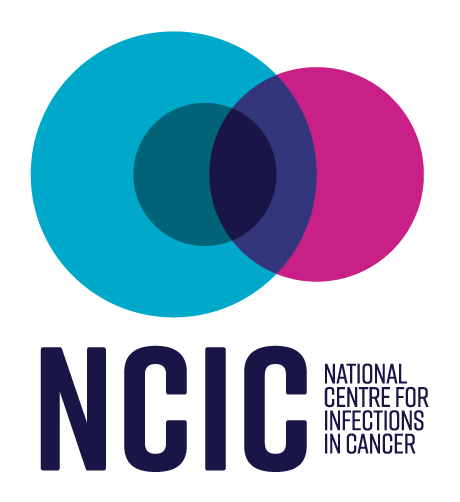LATEST UPDATE (November 2022)
“There is no place like home”
National implementation of the paediatric low-risk febrile neutropenia program
Low-risk FN program implementation tool-kit, useful resources found here
To date, across Australia, we have sent 148 patients with a febrile neutropenia episode safely home on the program.
That’s also 1,234 bed days saved nationally!
Formal economic analysis of the Royal Children’s Hospital program indicates the cost of home-based FN care is, on average, $12,000 cheaper than standard in hospital care.
“Being at home is better than being in hospital.”
“Going home with the Tazocin was so good. Being home and together [as a family] lifted my son’s spirits. His appetite increased and his sleeping improved once we went home. The nurses’ daily visits were convenient and efficient. It was a brilliant program.”
Febrile neutropenia (FN) is a common complication of childhood cancer treatment. It usually requires admission to hospital for intravenous antibiotics. Recent studies have shown that home-based care of children with FN at low-risk for serious infection is safe and effective.
In this study we are implementing a low-risk FN program across eight tertiary cancer hospitals in Australia. The program uses the ‘AUS-rule’ to determine the patient’s risk of infection as well as ‘safety-net’ criteria for home-based care. The ‘AUS-rule’ was developed in Australia in collaboration with researchers from the UK and Switzerland. It is used by doctors and nurses to help them assess the risk of infection in children with FN. Once a patient has been identified as low-risk for infection and meets all the ‘safety-net’ criteria, they may be eligible for FN treatment at home.
We are evaluating the safety of this model, as well as the impact on costs of care and patient and parent quality of life. Our study team includes a parent of child treated for cancer, as well as doctors, nurses, pharmacists, health economists and implementation scientists.
The program is currently open at all 8 study sites nationally:
· The Royal Children’s Hospital (Melbourne)
· The Monash Children’s Hospital (Melbourne)
· Queensland Children’s Hospital (Brisbane)
· John Hunter Children’s Hospital (Newcastle)
· Women and Children’s Hospital (Adelaide)
· Sydney Children’s Hospital (Sydney)
· Westmead Children’s Hospital (Sydney)
· Perth Children’s Hospital (Perth)
Please visit our research page for updates on the ELSA study, and the PACIFIC study
For guidelines please visit the clinician resources page
Australian Predicting Infectious ComplicatioNs in Children with Cancer (PICNICC) updates
Managing low‐risk febrile neutropenia in children in the time of COVID‐19: What matters to parents and clinicians. This study explores parent and clinician acceptance of home-based Febrile Neutrophenia (FN) treatment and the impact of COVID-19 on this model of care.
Known as the “Australian PICNICC study” followed 848 children with cancer and FN across Australia and tested the performance of 9 clinical decision rules designed to predict infection. https://www.ncbi.nlm.nih.gov/pmc/articles/PMC6978200/
Using Australian data this study found common factors associated with infection in children with cancer and FN. This study refined an existing clinical decision rule making it more relevant in the Australian setting (called AUS-rule) https://pubmed.ncbi.nlm.nih.gov/32637894/
Describes the development, implementation and outcome of Australia’s first paediatric low-risk FN program. https://pubmed.ncbi.nlm.nih.gov/32740894/
Explored aminoglycoside (ie. gentamicin or amikacin) use in children with cancer and FN. Surprisingly, there was no evidence for improved outcome in children who received an aminoglycoside in addition to their standard FN antibiotics. https://pubmed.ncbi.nlm.nih.gov/32936822/
Examined the diagnostic yield of blood cultures for children with cancer and FN. In the absence of a new fever or clinical instability, blood cultures beyond 48 hours for persistent fever have little value. https://pubmed.ncbi.nlm.nih.gov/32267508/
This study looked at the health-related quality of life (HRQoL) of children and parents during and following FN episodes. Risk factors for persistently low HRQoL (ie. chronic) included, the child being male, having solid cancer, the presence of financial stress, and relationship difficulties between the parent and child. https://pubmed.ncbi.nlm.nih.gov/34746716/
These studies explore the role of novel biomarkers in the prediction of infection in children with FN. https://pubmed.ncbi.nlm.nih.gov/35602885/ and https://pubmed.ncbi.nlm.nih.gov/34093531/
Early versus Late Stopping of Antibiotics in children with high risk FN (ELSA-FN)
Lead – A/Prof Gabrielle Haeusler
PhD student – Dr Coen Butters
The ‘Early versus Late Stopping of Antibiotics in Children with Cancer and High-risk Febrile Neutropenia’ (ELSA-FN) is the first embedded randomised controlled trial at Royal Children’s Hospital (RCH) and is part of the continuing effort to improve care for children with cancer.
After chemotherapy, children may have low neutrophils – a type of white blood cell that helps fight off infections. If they develop an infection and fever when they have low neutrophils (Febrile Neutropenia (FN)) it is a medical emergency and antibiotics have to be given quickly. Currently, there is no international consensus on how long to give a course of antibiotics in children with FN. US guidelines say to continue antibiotics until the child’s neutrophils increase but Euro guidelines say to stop antibiotics 48 hours after the fever has gone. This trial will compare both approaches.
While antibiotics are important for treatment of infection, unnecessary exposure has many adverse effects including:
Increased antimicrobial resistance
Risk of C. difficile and invasive fungal infection
Added cost
Disruption of the patient microbiome, with a range of secondary effects
Using the power of our data we can influence worldwide clinical best practice.
For more information, please visit the national library of medicine.


